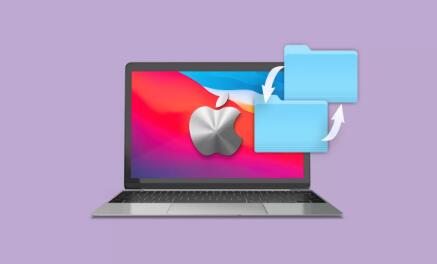Recovering an accidentally replaced file can be a stressful situation, but there are several methods you can try to restore your lost data.
When you replace a file, the original file is often overwritten, which can make recovery more complex. The ability to recover the file depends on several factors, including:
File System: Different file systems handle deleted or overwritten data differently.
Time Since Replacement: The sooner you attempt recovery, the better your chances.
Usage of the Device: Continued use can overwrite sectors where the original file was stored, making recovery impossible.

Steps for Recovery
1. Check the Recycle Bin (Windows) / Trash (Mac)
The simplest method is to check your Recycle Bin or Trash. If you’ve deleted a file, it might still be recoverable.
Windows: Open Recycle Bin, locate your file, right-click, and select “Restore.”
Mac: Open Trash, find your file, right-click, and select “Put Back.”
2. Use File History (Windows)
Windows has a built-in feature called File History that might help recover older versions of files.
Right-click on the folder where the file was located.
Select “Properties.”
Go to the “Previous Versions” tab.
Look for the file version you need, select it, and click “Restore.”
3. Restore from Time Machine (Mac)
If you use Time Machine for backups:
Open the folder where the file was located.
Click on the Time Machine icon in the menu bar and choose “Enter Time Machine.”
Use the timeline on the right to locate a backup before the file was replaced.
Select the file and click “Restore.”
4. Use Data Recovery Software
If the above methods don’t work, data recovery software can help recover overwritten files. Here are some popular options:
Recuva (Windows): A user-friendly tool that can recover deleted files from hard drives, USB drives, and memory cards.
EaseUS Data Recovery Wizard (Windows & Mac): Offers a powerful recovery solution with a simple interface.
Disk Drill (Windows & Mac): Known for its recovery capabilities and user-friendly design.
How to Use Recovery Software:
Download and Install: Install the software on a different drive than the one where the file was lost to prevent overwriting data.
Run a Scan: Launch the software and choose the drive to scan for lost files.
Preview and Recover: Once the scan is complete, preview the recoverable files, select the ones you want, and choose a recovery location.
5. Command Prompt (Windows)
For advanced users, you can try using Command Prompt to recover older file versions.
Open Command Prompt: Search for “cmd” in the Start menu and run it as an administrator.
Type the command: cd \Path\To\Your\Folder
Type: dir /a /s to list all files, including hidden ones.
Look for your file and attempt recovery using the methods above.
6. Professional Data Recovery Services
If all else fails and the data is critical, consider hiring a professional data recovery service. These services can be expensive but may be your best bet for recovering important files.
Best Practices for Preventing Future Data Loss
Regular Backups: Implement a regular backup schedule using external drives or cloud services.
Version Control: Use version control systems (like Git) for important projects to track changes and revert if necessary.
Use a File Recovery Tool: Keep a reliable file recovery tool installed for emergencies.
Be Cautious with Replacements: When replacing files, consider renaming the old file instead of overwriting it immediately.
Recovering an accidentally replaced file is possible, but the success of recovery depends on various factors. Always start with the simplest methods before moving on to software or professional services. Implementing preventive measures can significantly reduce the chances of data loss in the future. By staying vigilant and prepared, you can mitigate the risks associated with file management.
About us and this blog
Panda Assistant is built on the latest data recovery algorithms, ensuring that no file is too damaged, too lost, or too corrupted to be recovered.
Request a free quote
We believe that data recovery shouldn’t be a daunting task. That’s why we’ve designed Panda Assistant to be as easy to use as it is powerful. With a few clicks, you can initiate a scan, preview recoverable files, and restore your data all within a matter of minutes.
Subscribe to our newsletter!
More from our blog
See all postsRecent Posts
- Data recovery salt lake city utah 2025-04-18
- Data recovery sacramento 2025-04-18
- Data recovery miami 2025-04-18

 Try lt Free
Try lt Free Recovery success rate of up to
Recovery success rate of up to









